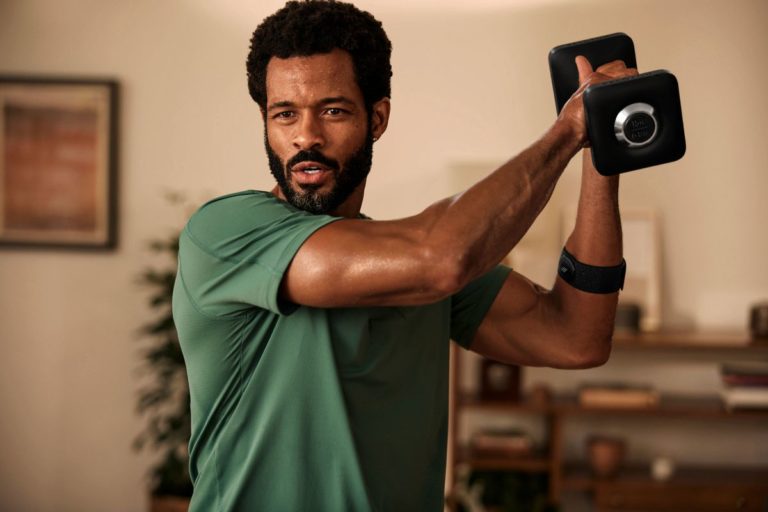A new vertical within fitness and wellness has emerged. Say hello to the high-performance lifestyle.
What it is: Combining elements of technology, athletics, medicine, and mindfulness, the high-performance lifestyle (HPL) aims to optimize our existence.
By the numbers:
- The US self-improvement market is valued north of $13.2B.
- In the coming years, the global wearable technology market will exceed $60B.
- The global sports medicine market, including athletic recovery, will surpass $9B by 2024.
- By 2027, the global alternative medicine market—including yoga, acupuncture, and meditation—will reach $296.3B.
Why it matters: A masculine counterpart to the feminine notion of self-care, the HPL is geared toward self-mastery. Like the woo-woo version of wellness championed by Goop, the HPL has given rise to products, personalities, and philosophies at the intersection of snake oil and actual science.
The big picture: As the category continues to evolve, the HPL is creating new opportunities for brands seeking to push the limits of performance. From training programs and supplement protocols to wearables, recovery tech, and even therapeutics, unlocking our true potential is increasingly becoming a commercialized pursuit.
How We Got Here
The HPL is rooted in two related concepts: quantified self and biohacking.
The modern-day quantified self movement got its start in 2007. According to its website, the term quantified self is loosely defined as “self-knowledge through numbers” — where self-tracking is used to answer health questions, achieve a specific goal, or follow a curiosity.
Beyond data collection, biohacking is a form of self-experimentation. Often called DIY biology, biohacking takes an algorithmic approach to the human system, manipulating inputs to maximize outputs. Outputs, in this case, intended to upgrade the mind and body.
The Founding Fathers
The extent to which biohacking or quantified self has entered the mainstream consciousness is likely a result of Tim Ferriss and Dave Asprey having popularized it.
For his part, Ferriss, an accomplished investor, author, and podcaster, has referred to himself as a “human guinea pig”. An attendee of the first Quantified Self meet-up, his earliest content was biohacky—and clickbaity, too—as evidenced by posts like the one entitled: “How I Gained 34lbs. of Muscle in 4 Weeks”.
Over the years, Ferriss focused more on optimization and less on bro-y hacks. These days, his podcast, The Tim Ferriss Show, is a platform for deconstructing the “tactics, tools, and routines” of world-leading experts. Emblematic of the HPL as we define it, guests run the gamut from Navy SEALs and spiritual gurus to medical practitioners.
Whereas Ferriss diverged from biohacking, Dave Asprey doubled down.
Having spent millions of dollars to hack his health, Asprey lost 100+ pounds, boosted his IQ, and reduced his biological age in an effort to live to at least 180 years old. A walking infomercial for his Bulletproof brand—a media company, supplement line, and gym chain—Asprey’s efforts often border on outlandish.
In fact, his most recent book, Super Human: The Bulletproof Plan to Age Backward and Maybe Even Live Forever, sums up Asprey’s approach quite well — being provocative moves product.
The Patron Saint
If Ferriss and Asprey are the forebears of the high-performance lifestyle, Joe Rogan is the patron saint.
Rogan’s podcast, The Joe Rogan Experience, is among the most-listened-to podcasts on the planet. It’s also his bully pulpit from which he advocates for self-discipline, physical fitness, clean eating, and mental toughness, among other things.
To be sure, those “other things” include conspiracy theories and countless hours of non-PC conversations that have gotten Rogen in hot water. But, more often than not, the conversations hit on self-mastery, a term that’s central to the HPL.
From Dr. Peter Attia and Dr. Rhonda Patrick to Jocko Willink, Naval Ravikant, Matthew Walker, Sam Harris, Dennis McKenna, David Goggins… the list goes on, Rogan’s guests are the high priests of the high-performance lifestyle across its various pillars.
Self-Mastery as Self-Care
Beyond physical feats alone, the HPL taps into existentialism, addressing aspects of spirituality, self-actualization, and even mortality.
Love it or hate it, self-care has ballooned into a billion-dollar industry. At one end of the spectrum, exercise, meditation, and journaling help proponents find balance. Meanwhile, at the other extreme, astrology, tarot cards, and healing crystals help disciples find meaning.
Similarly, the HPL is tapping into meaning. Filling a void left by the collapse of traditional institutions and the changing definition of masculinity, self-mastery has become the holy grail. In HPL circles, those pursuits include stoicism, Brazilian Jiu-jitsu, big-game hunting, archery, kettlebells, surfing, contrast therapy, intermittent fasting, and psychedelics.
Like the expansive category of self-care, HPL isn’t without its faults. If wellness is dominated by pseudoscience, HPL is overrun with broscience. It’s also difficult to distinguish between optimization and obsession.
Take Twitter and Square chief executive Jack Dorsey for instance. Recently, Dorsey discussed his daily routine—fasting, meditation, sauna, ice bath, sleep tracking—on the Ben Greenfield Fitness podcast (Greenfield is an HPLer of Asprey’s sect). Hearing Dorsey’s regimen left some listeners feeling inspired, while others walked away questioning his sanity.
Looking Ahead
If the booming wellness industry is any indication, all signs point to the proliferation of the high-performance lifestyle.
For now, sleep trackers like Oura and WHOOP are leading the way. The same can be said of recovery tech from Hyperice and NormaTec, as well as Myodetox clinics. Likewise, Laird Hamilton’s XPT protocol and the Wim Hof Method from the Iceman himself have tapped into heart rate variability, cold exposure, and breathwork.
But we’re just getting started. As the pursuit of performance ratchets up, and efforts to optimize everything intensifies, don’t be surprised to see more mind-bending psychedelics, recovery-inducing therapeutics (think stem cell and testosterone replacement), and life-extending practices creep into the mainstream.




